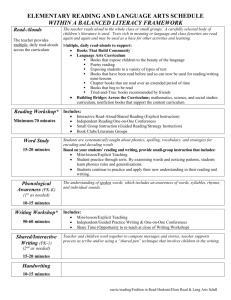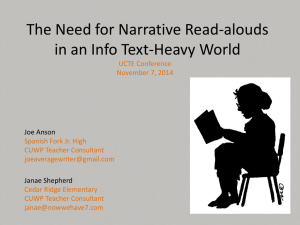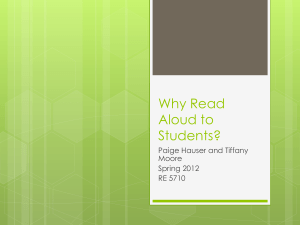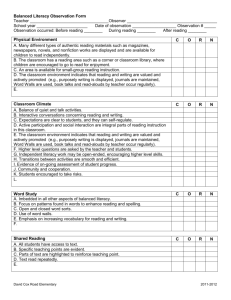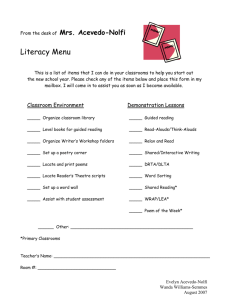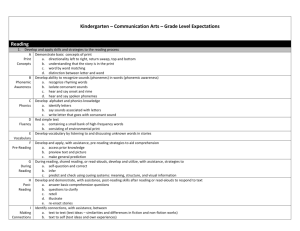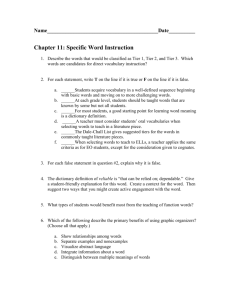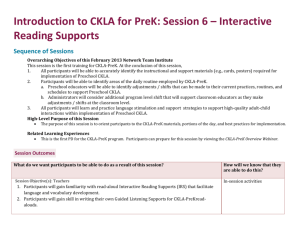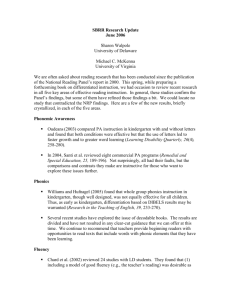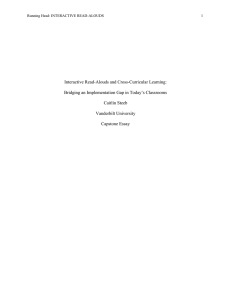EDC 448 Power Point - URI
advertisement
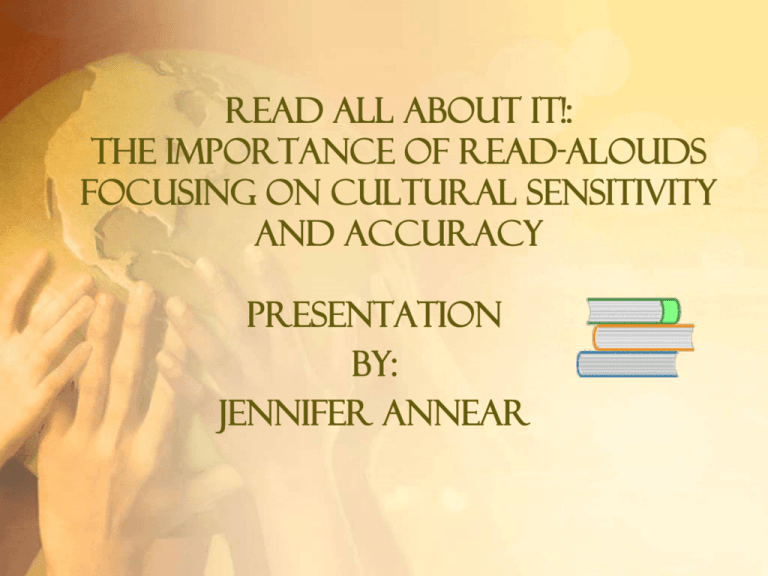
Read All About It!: The Importance of Read-Alouds Focusing On Cultural Sensitivity and Accuracy Presentation By: Jennifer Annear Why Are Read-Alouds Important? They: • Help students become better readers • Can be used to help students learn to predict, hypothesize, analyze and make connections • Help students become motivated to read • Can enhance vocabulary development • Allow teachers to be sure a student is focused Importance of Read-Alouds Continued… They: • Can help clarify concepts • Can expose students to difficult topics in a “safe environment” (prejudice, slavery, discrimination) • Expose students to topics they might not choose to learn about on their own • Can provide good modeling of reading skills Why Are Read-Alouds With Cultural Books Important? “By 2050 the Anglo population is projected to decrease to 52%, as ethnic minority groups continue to increase” (Boutte, 1999). Culturally Sensitive Books: • Promote positive cross-cultural attitudes • Transmit values, norms, and attitudes • Provide minorities with positive role models Importance of Cultural ReadAlouds Continued… Culturally Sensitive Books: • Help students develop tolerance • Expose children to all different cultures • Help minorities in the class to feel included and important • Give students cultural pride • Help students develop tolerance Are Read-Alouds Only For Elementary School Children? The consensus is no! Jim Trelease in his book The Read Aloud Handbook says: “Reading aloud is a commercial for reading. ...Think of it this way: McDonald's doesn't stop advertising just because the vast majority of Americans know about its restaurants. Each year it spends more money on ads to remind people how good its products taste. Don't cut your reading advertising budget as children grow older." Cultural Read-Alouds : How To Choose A Quality Book 1. Always fully read through the book first 2. Make sure the book is free of stereotypes 3. Make sure the book portrays the culture in an accurate and positive manner 4. Be sure to choose books that are balanced between describing the culture in a historical setting and modern times 5. Be sure the book is free of offensive materials 6. Warning: just because a book has favorable reviews does not mean it is culturally accurate! Examples of Culturally Sensitive Children’s Books A Jar of Dreams By: Yoshiko Uchida When Marian Sang By: Pam Munoz Ryan Pueblo Boy: Growing Up In Two Worlds By: Marcia Keegan A Great Website For Analyzing The Cultural Sensitivity Of A Book : http://www.birchlane.davis.ca.us/library/10quick.htm Ideas For Using Read-Alouds In The Classroom • As the hook to a lesson • As a way to quickly introduce an important aspect of a unit • As a way to start a class discussion • As a way to teach/model reading strategies • As a way to highlight important parts of a text/chapter book • As a way to get kids interested in reading about your content!!!! Food For Thought The results of a survey, published in "Why Do Teachers Read Aloud?" (The NERA Journal, Volume 35, Number 1, 1999), proved that reading aloud is not a hit-or-miss activity. The survey showed that 70 percent of primarygrade teachers read to their students every day and 37 percent of secondary-school teachers read at least three or four times a week. The Bottom Line: Read-Alouds Are A Great Tool For Any Type of Teacher and They Are Beneficial To all Students!!!! Your Homework How you can use read-alouds in your own classroom, especially ones that incorporate all different types of cultures? Sources Morgan, Hani. "Using Read-Alouds with Culturally Sensitive Children's Books: A Strategy that Can Lead to Tolerance and Improved Reading Skills." Reading Improvement 46 (2009): 3-8. Sharpe, Wesley. "Reading Aloud- Is It Worth It?" Education World. 2001. 17 June 2009. My Contact Information: jennifer.annear@gmail.com
